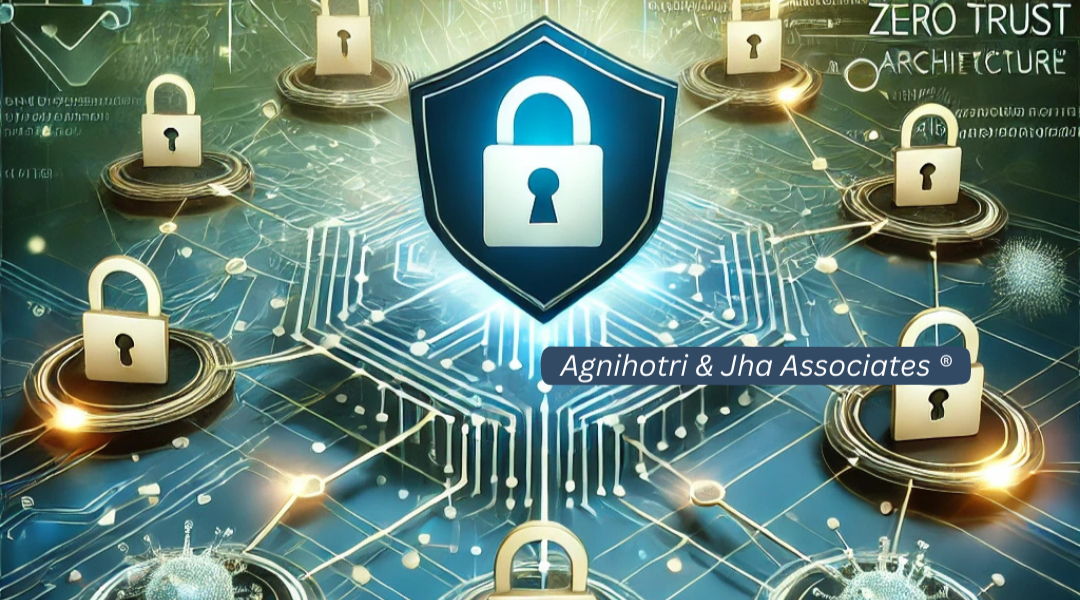Hariprasad Sivaraman, USA
Introduction
In an era where cyber threats are more sophisticated and persistent than ever, traditional perimeter-based security models are no longer sufficient. Cyberattacks such as ransomware, phishing, and insider threats exploit weaknesses in outdated security approaches, leaving organizations vulnerable. Enter Zero Trust Architecture (ZTA)—a modern cybersecurity paradigm that challenges the “trust but verify” model and replaces it with “never trust, always verify.”
This blog explores the principles of Zero Trust, its critical role in modern cyber defense, and why it is integral to U.S. national security and enterprise resilience.
What Is Zero Trust Architecture?
Zero Trust Architecture is a security framework based on the principle that no user or device, whether inside or outside the network, should be trusted by default. Every access request is verified based on user identity, device health, and contextual data, such as location and behavior patterns.
Unlike traditional security models that rely on strong perimeters, Zero Trust assumes that threats can originate anywhere—inside or outside the organization. This approach minimizes the risk of unauthorized access and lateral movement within networks, significantly enhancing an organization’s security posture.
Core Principles of Zero Trust
- Least Privilege Access
- Grant users and devices only the access they need to perform their tasks—no more, no less. This minimizes the potential impact of compromised credentials.
- Continuous Verification
- Access isn’t granted once and forgotten; every request is verified in real-time using authentication protocols, contextual data, and behavioral analytics.
- Micro-Segmentation
- Networks are divided into smaller segments to restrict lateral movement, ensuring that attackers cannot gain access to an entire network.
- Assume Breach
- Operate under the assumption that breaches will occur, and design security measures to minimize damage and ensure rapid containment.
- Multi-Factor Authentication (MFA)
- Require multiple layers of authentication to verify user identities, making it more difficult for attackers to exploit compromised credentials.
Why Zero Trust Matters in Modern Cyber Defense
- Addressing Sophisticated Threats
- Advanced Persistent Threats (APTs) and insider attacks often bypass traditional defenses. Zero Trust’s granular verification mechanisms make it harder for such threats to succeed.
- Protecting Distributed Workforces
- With the rise of remote work, cloud adoption, and IoT devices, perimeter defenses are obsolete. Zero Trust secures access across distributed environments, regardless of location.
- Safeguarding Critical Infrastructure
- Zero Trust is essential for industries like energy, healthcare, and finance, where breaches could lead to catastrophic consequences.
- Reducing Attack Surface
- By micro-segmenting networks and enforcing strict access controls, Zero Trust reduces the pathways attackers can exploit.
Zero Trust and U.S. National Security
For the United States, implementing Zero Trust is not just an organizational necessity—it is a matter of national security. Federal agencies and critical infrastructure operators face constant threats from state-sponsored actors and cybercriminals. The adoption of Zero Trust Architecture ensures:
- Protection of Federal Systems: Sensitive data and classified information remain secure, even in the event of a breach.
- Resilience Against Nation-State Attacks: Micro-segmentation and least privilege access make it harder for adversaries to conduct espionage or sabotage.
Implementing Zero Trust: Key Technologies
- Identity and Access Management (IAM)
- Enforce robust identity verification using MFA, Single Sign-On (SSO), and contextual data.
- Endpoint Security
- Ensure all devices accessing the network meet security standards and are monitored for threats.
- Network Micro-Segmentation
- Divide networks into zones, restricting access based on roles, functions, and sensitivity.
- Behavioral Analytics
- Monitor user and device behavior for anomalies, flagging unusual activities for further investigation.
- Secure Access Service Edge (SASE)
- Integrate security and networking functions to provide secure access to applications and data, regardless of user location.
Challenges in Adopting Zero Trust
While Zero Trust offers significant benefits, its implementation can be complex:
- Cultural Resistance: Organizations accustomed to traditional models may resist the shift to continuous verification.
- Technical Complexity: Integrating Zero Trust into legacy systems can be challenging, requiring significant investments in time and resources.
- Balancing Security and Usability: Overly strict policies can hinder productivity, making it crucial to balance security measures with user experience.
Addressing these challenges requires executive buy-in, cross-departmental collaboration, and a phased implementation strategy.
Real-World Applications
- Federal Agencies
- The U.S. Department of Defense is leveraging Zero Trust to secure sensitive communications and prevent unauthorized access to classified systems.
- Healthcare
- Zero Trust frameworks protect patient data and ensure HIPAA compliance by securing electronic health records (EHRs) against breaches.
- Financial Institutions
- Banks use Zero Trust to prevent unauthorized transactions and protect against insider fraud.
Conclusion
Zero Trust Architecture represents a paradigm shift in cybersecurity, replacing outdated perimeter defenses with a robust, identity-centric approach. For the United States, embracing Zero Trust is essential for protecting critical infrastructure, safeguarding federal systems, and ensuring resilience against advanced cyber threats.
As organizations and governments adopt Zero Trust, they build a foundation for modern cyber defense—one that is proactive, adaptive, and resilient. The journey to Zero Trust may be challenging, but in a world where trust is the weakest link, it is the only way forward.
Disclaimer:
The content published on this blog is for informational purposes only and reflects the author’s personal opinions, insights, and knowledge on the topics discussed. While every effort is made to ensure the information provided is accurate and up-to-date, the author does not guarantee the completeness, reliability, or accuracy of the content.All content is the intellectual property of the author unless otherwise stated. Unauthorized use or reproduction of any content without prior permission is strictly prohibited.By accessing this blog, you agree that the author is not liable for any actions taken based on the information presented, nor for any damages, losses, or issues that may arise from its use.



